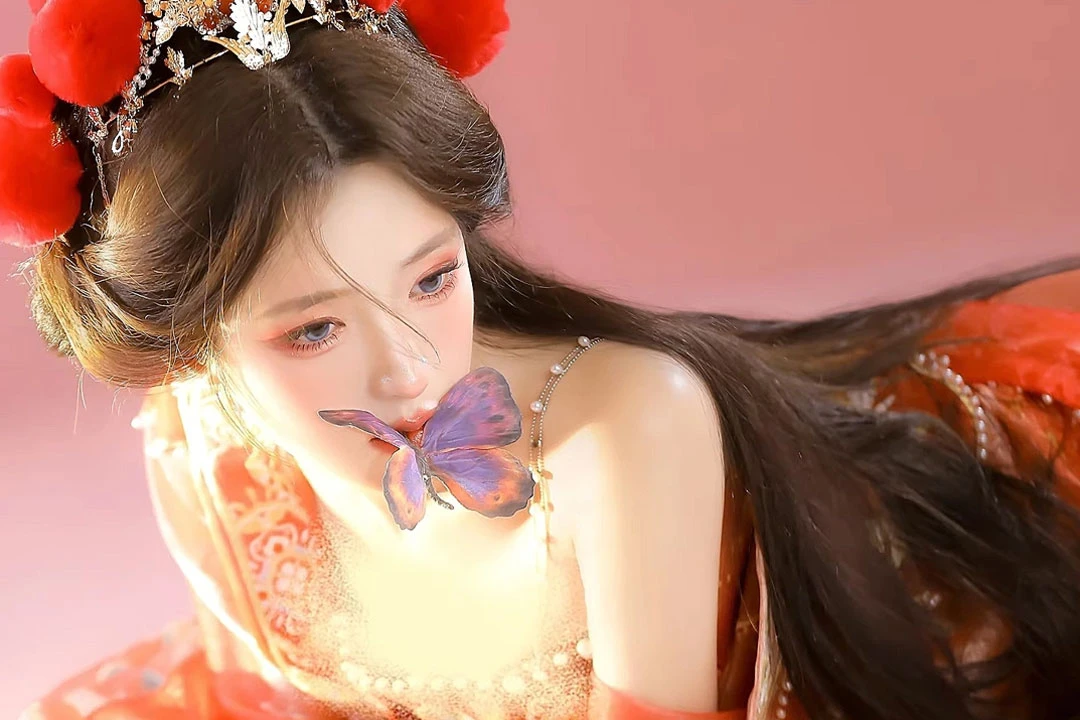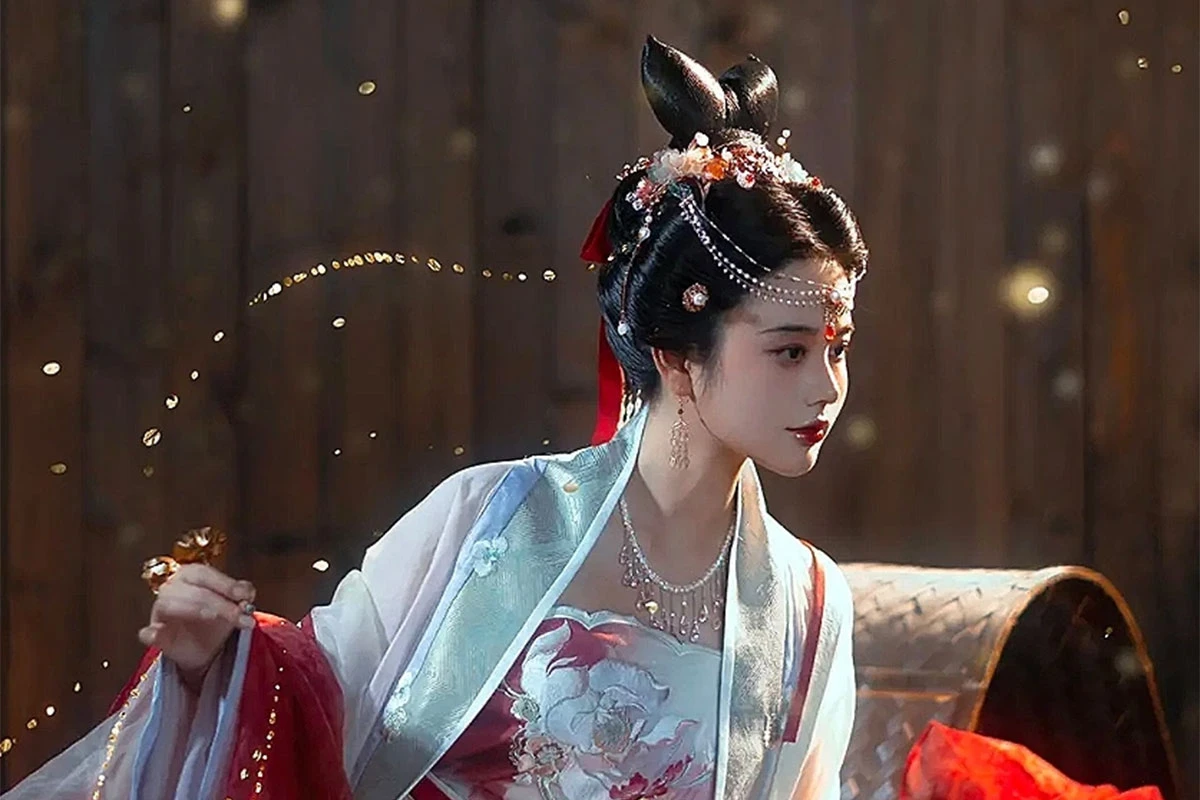In the world of Hanfu, accessories are more than embellishments; they are a crucial element that completes the ensemble, adding depth and nuance to the wearer’s cultural expression. These adornments go beyond mere aesthetics, playing a vital role in conveying the wearer’s connection to tradition and storytelling.
Classic Hanfu accessories serve as more than mere embellishments; they carry profound cultural and historical significance. Each accessory is a symbol, reflecting the wearer’s social status, occasion, and even personal beliefs. From headwear to belts, these accessories contribute to the visual storytelling embedded in the fabric of Hanfu attire.
Hanfu Headwear
The headwear in Hanfu is as diverse as the dynasties that shaped Chinese history. From simple hairpins to elaborate crowns, headwear plays a crucial role in defining the wearer’s identity and social status. For instance, a Ming-style guan (冠), or crown, signifies the wearer’s adherence to Ming Dynasty fashion, while a Song-style diadem (钗) reflects a preference for Song Dynasty aesthetics.
Hanfu Belts and Sashes
Belts and sashes in Hanfu are not merely functional; they are artistic expressions that cinch the attire together, creating a harmonious silhouette. The style, material, and color of the belt can convey messages about the wearer’s age, gender, and occasion. A jade belt, for example, might be reserved for special ceremonies, symbolizing wealth and good fortune.
The creation of Classic Hanfu accessories is an art form in itself. Craftsmen employ traditional techniques passed down through generations, using materials that range from precious metals to intricate embroidery. Understanding the craftsmanship behind these accessories is essential for appreciating the cultural depth they bring to the Hanfu ensemble.
Embroidery is a hallmark of Classic Hanfu accessories, showcasing the skill and precision of artisans. Whether it’s the delicate patterns adorning a silk handkerchief or the intricate motifs on a hairpin, embroidery elevates these accessories to wearable works of art. The themes often draw inspiration from nature, mythology, and classic Chinese literature, imbuing each piece with layers of cultural significance.
Metal accessories, such as hairpins, crowns, and belt buckles, are often crafted with meticulous attention to detail. Traditional metalwork techniques, including filigree and repoussé, are employed to create intricate designs that reflect the cultural aesthetics of specific dynasties. Gold and silver are commonly used, symbolizing wealth and prosperity.
The evolution of Hanfu fashion has given rise to a diverse array of accessories, each associated with a particular era or dynasty. Exploring the popular accessories of different historical periods provides insight into the ever-changing landscape of Chinese fashion.
During the Han Dynasty, simplicity and elegance defined Hanfu accessories. Hairpins with modest designs and silk sashes were common, reflecting the classical aesthetics of the time. The Tang Dynasty marked an era of opulence, reflected in the elaborate accessories of the time. Intricately designed crowns, bejeweled hairpins, and richly adorned belts became emblematic of Tang fashion. The Song Dynasty ushered in an era of understated grace. Delicate diadems and intricately embroidered handkerchiefs adorned with poetic motifs were popular accessories, embodying the refined tastes of the period. The Ming Dynasty witnessed a revival of traditional Chinese culture, and Hanfu accessories embraced this resurgence. Ming-style crowns and jade belts became iconic symbols of cultural identity.
While Hanfu experienced a decline during the Qing Dynasty and the subsequent Republican era, the 21st century has witnessed a resurgence of interest in traditional Chinese attire. The Modern Hanfu Movement seeks to revitalize and reinterpret classic Hanfu, making it accessible to contemporary wearers while preserving its cultural essence.
Contemporary designers are exploring innovative ways to blend traditional craftsmanship with modern design sensibilities. This includes experimenting with new materials, incorporating modern motifs into embroidery, and adapting classic accessories to suit contemporary tastes.
The popularity of Hanfu has transcended geographical boundaries, with enthusiasts around the world embracing this elegant attire. Online communities and social media platforms have played a significant role in connecting individuals passionate about Hanfu, fostering a global appreciation for Chinese cultural heritage.
As Hanfu gains international attention, discussions around cultural appropriation and sensitivity have become increasingly important. It is crucial to approach the wearing of Hanfu with respect for its cultural and historical context, understanding the significance of each accessory and its connection to Chinese traditions.
Conclusion
In conclusion, Classic Hanfu accessories are not just adornments; they are threads woven into the tapestry of Chinese cultural heritage. From the simplicity of the Han Dynasty to the opulence of the Tang, each era has left its mark on the evolution of Hanfu fashion. The craftsmanship, materials, and intricate detailing of accessories tell a story of a civilization’s rich history, its artistry, and its enduring elegance. As we navigate the contemporary resurgence of Hanfu, it is essential to appreciate and preserve the cultural significance embedded in each accessory, ensuring that the legacy of this timeless attire continues to thrive for generations to come.


